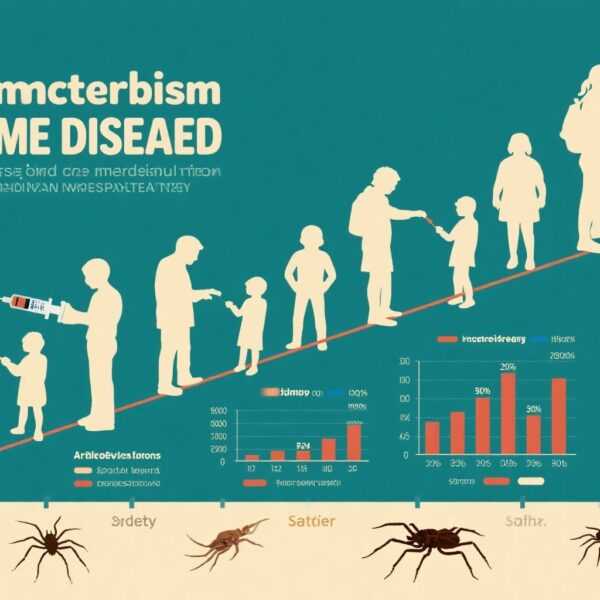Study Background and Disease Burden
Acute intracerebral hemorrhage (ICH) remains a devastating form of stroke worldwide, with high mortality and morbidity rates and a significant burden on healthcare systems, particularly in low- and middle-income countries. Early intensive management to mitigate secondary brain injury is critical yet complex, involving modulation of several physiological parameters. The third Intensive Care Bundle with Blood Pressure Reduction in Acute Cerebral Hemorrhage Trial (INTERACT3) demonstrated that a care bundle approach, integrating rapid control of elevated blood pressure (BP), glucose, and temperature alongside anticoagulation reversal, significantly improved functional outcomes of patients after ICH.
However, while INTERACT3 proved the overall efficacy of the bundled intervention, the relative contribution of each component to the observed clinical benefit remained unclear. Clinicians and policymakers require clarity on which care elements are most crucial to optimize resource allocation, particularly in settings with limited healthcare infrastructure.
Study Design
INTERACT3 employed a stepped-wedge, cluster randomized controlled trial design conducted across 10 hospitals spanning five lower, four upper middle-income countries, and one high-income country, offering broad global applicability. The study enrolled patients with acute ICH and randomized care bundles including early control of elevated systolic BP, blood glucose, body temperature, and reversal of warfarin-related anticoagulation compared to usual care.
The primary outcome was functional recovery assessed by the modified Rankin Scale (mRS) at 6 months post-randomization. Statistical analyses employed a modified intention-to-treat population of 6,225 participants with available mRS data. To parse the specific effects of each bundle component, the authors conducted model-based causal mediation analyses. These evaluated both achievement of protocol-specified treatment targets and actual physiological control levels via summary metrics—mean, variation, and early reduction for systolic BP; mean values for blood glucose, body temperature, and international normalized ratio (INR) over the first 24 hours after enrollment.
Key Findings
The causal mediation analysis revealed that among the bundle components, only systolic BP and blood glucose control had statistically significant positive contributions to the improved functional outcomes observed. Specifically, the mediated proportion of the total treatment effect attributed to achieved systolic BP control was 8.9% (95% confidence interval [CI]: 4.8–20.0), while that attributed to blood glucose control was 7.0% (95% CI: 1.1–17.0). Regarding protocol target achievement, mediation proportions were 4.0% (95% CI: 1.2–14.0) for systolic BP and 7.6% (95% CI: 2.2–15.0) for blood glucose.
Neither control of body temperature nor reversal of warfarin-related anticoagulation significantly mediated the functional outcome benefits in this analysis. This observation suggests that the early physiologic optimization of BP and glucose levels drives the primary share of outcome improvements.
The study population (mean age 61.9 years, 36.5% women) reflects real-world demographics across diverse global settings, enhancing generalizability. Safety data were consistent with prior INTERACT trials, with no new concerns reported.
Expert Commentary
This mediation analysis provides critical mechanistic insights into the components of acute ICH care that most strongly influence long-term functional recovery. The results corroborate the pathophysiological understanding that elevated BP can exacerbate hematoma expansion and secondary injury, while hyperglycemia can worsen oxidative and inflammatory damage to vulnerable brain tissue.
Controlling these variables early and effectively appears paramount, with meaningful implications for clinical practice. While temperature control and anticoagulation reversal are clinically important, their modest or undetermined mediation role in functional outcome improvement may reflect timing, baseline variability, or sample size limitations for these components in this trial. Future research should explore tailored strategies for these elements in specific patient subgroups.
From a translational standpoint, this evidence supports prioritizing resources and clinical training to ensure high-fidelity blood pressure and glucose management are integral to ICH protocols. The stepped-wedge design and multinational execution add robustness to these conclusions, supporting incorporation into guideline updates.
Conclusion
The mediation analysis of the INTERACT3 study delineates that within the care bundle for acute ICH, early and effective control of systolic blood pressure and blood glucose are the key mediators of improved 6-month functional outcomes. These findings highlight the critical impact of these physiologic targets and support a focused, evidence-based approach in acute stroke critical care bundles. Continued research should refine component-specific interventions and explore personalization for maximal clinical benefit.



